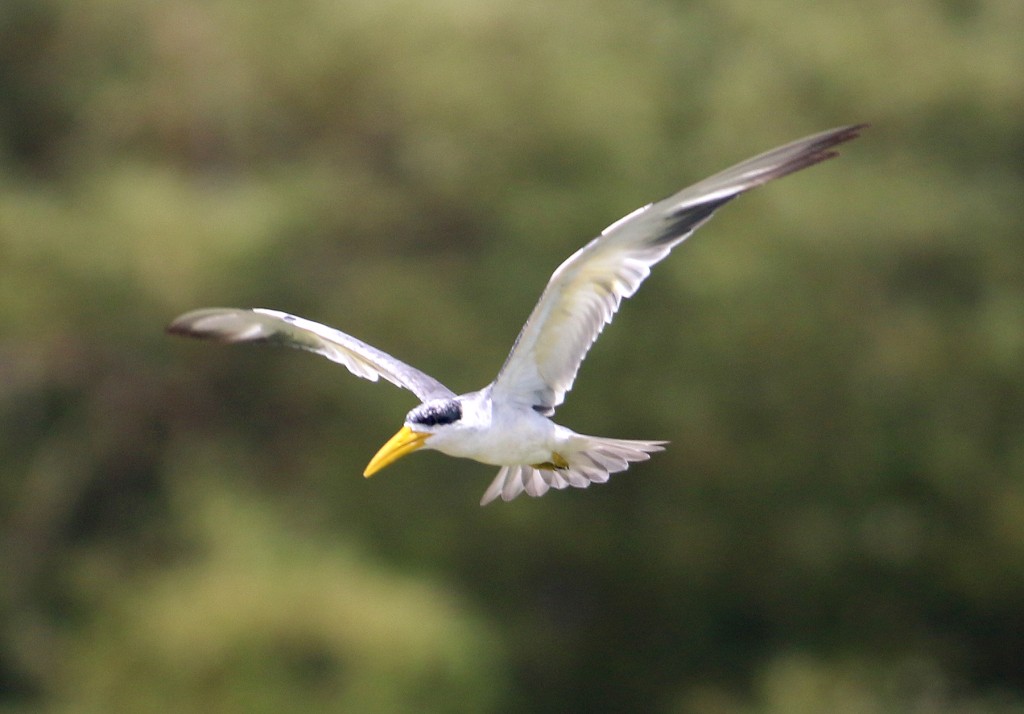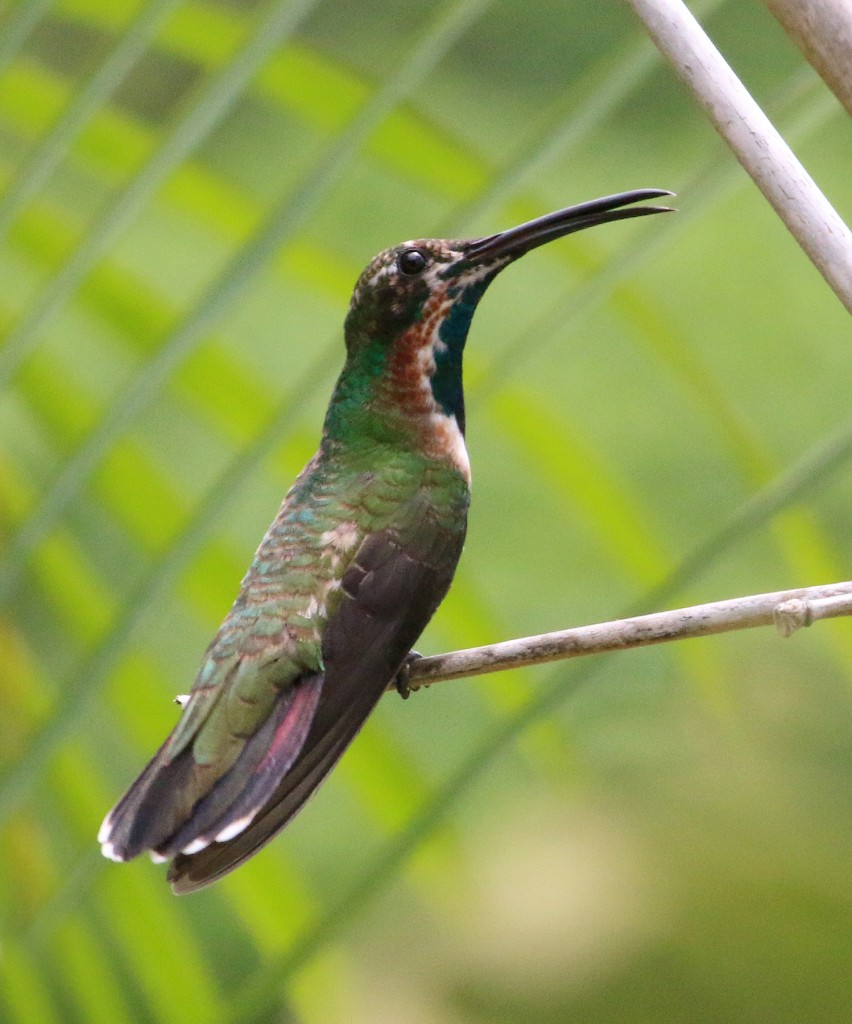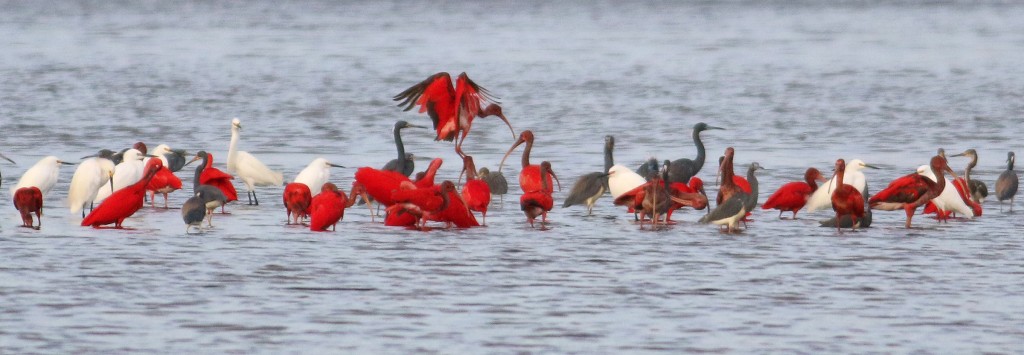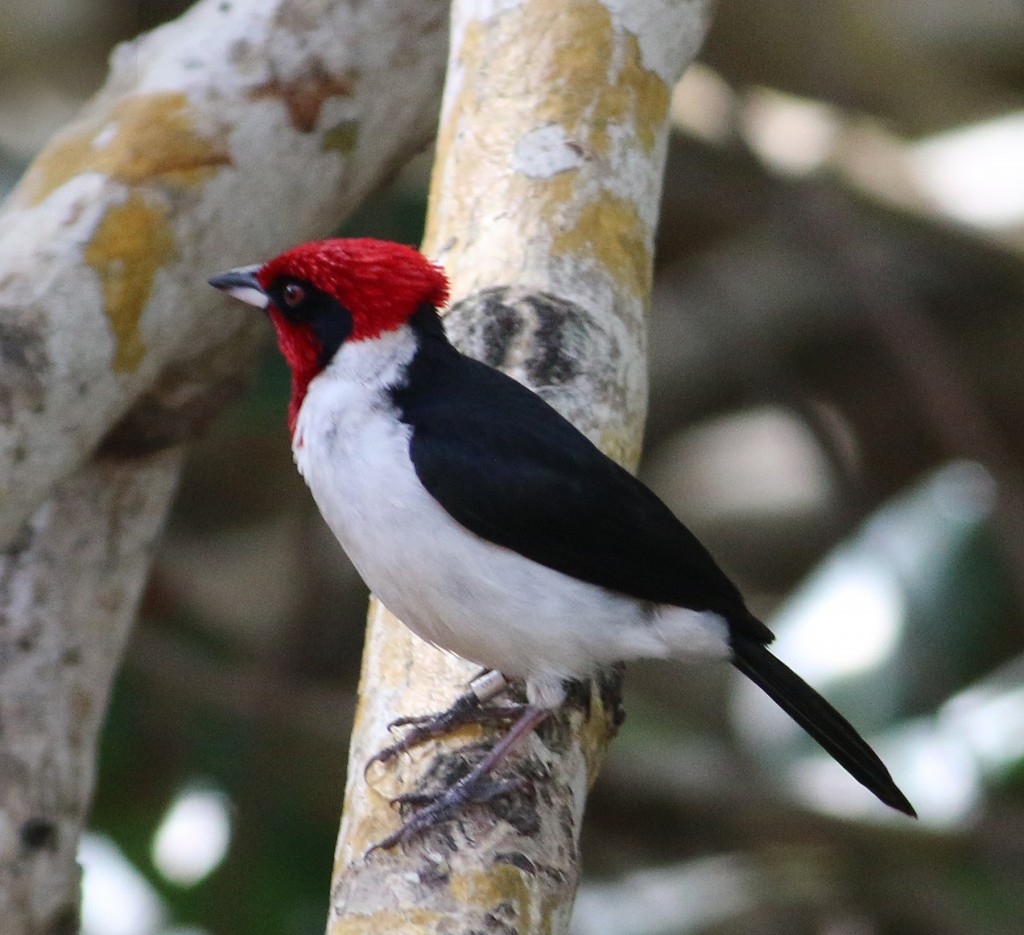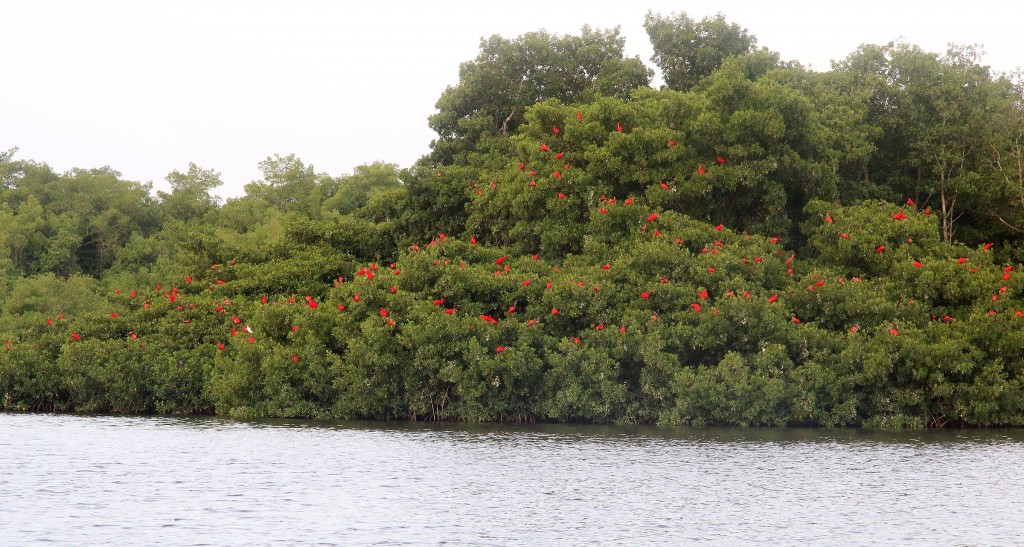Our final day in Trinidad was spent visiting three locations: the Trincity ponds, Yerrete, and Caroni Swamp. The Trincity pond facility is a water treatment plant that is off-limits to the public, but one pond can be viewed from the roadside. This was fortunate, because a few desirable species were seen within a short time here. Circling above the pond as we arrived was a Yellow-billed Tern, shortly joined by a Large-billed Tern for a nice comparison. Also seen at this location were Purple Gallinule, Long-winged Harrier, Striated Heron, and Osprey (its nice occasionally seeing a species familiar to us!). A short drive away and we arrived at Yerrete, the home of Theo and Gloria Ferguson that they have developed as a haven for hummingbirds. The Fegusons have several dozen feeders in their small yard, which draws 13 hummingbird species on a typical day, including two (Ruby-topaz Hummingbird and Green-throated Mango) that we did not see at the Asa Wright feeders. Theo is an avid photographer of hummingbirds and provides an impressive and informative slide show of his photos for visitors. After bidding adieu to Theo, we drove to Caroni Swamp, just south of the capital of Port-of-Spain.
Caroni Swamp is a highlight for many nature-minded travelers to Trinidad, including both birders and non-birders alike. Visitors are taken into the mangrove swamp in motorized boats that carry ~30 passengers, during that time enjoying views of unique animals such as Four-eyed Fish, Tree Boa, Silky Anteater, and Common Potoo that are pointed out by the eagle-eyed guides. Before sunset arrived, we joined five other boats moored along the edge of a large impoundment and awaited the arrival of the star of the show: Scarlet Ibises. And they do arrive, in small groups of 5, 10, or 20 birds at a time, some joining other waders in the shallows, but with most heading straight for trees on the opposite shore. A single Scarlet Ibis circling over the boat alone is a spectacular sight, with a color that is beyond what I have seen in any other bird; I don’t know what adjective is appropriate to describe a nearly constant flight of groups of 5-20 of these impressive birds. During our stay I estimated ~500 Scarlet Ibis flying in and roosting in the trees, but during the prime season, more than 1,000 are expected. It was a fitting ending to our trip, and something to look forward to when you visit.
In addition to being a gorgeous bird, the Scarlet Ibis turned out to be a minor landmark, for me, being the 1,100th bird species that I have photographed. Only 900 more to get to 2,000. Ha ha.
